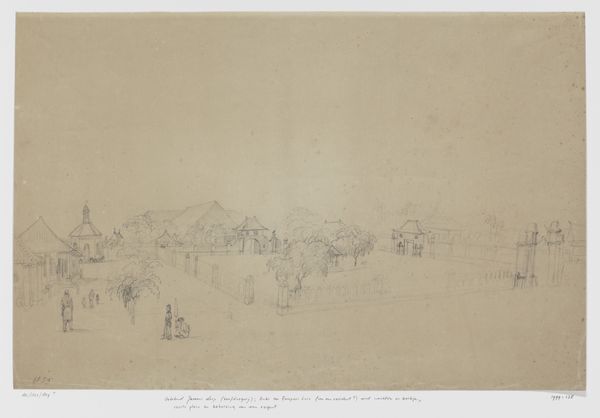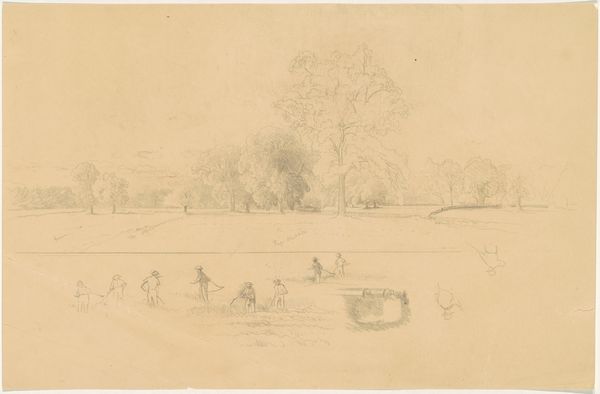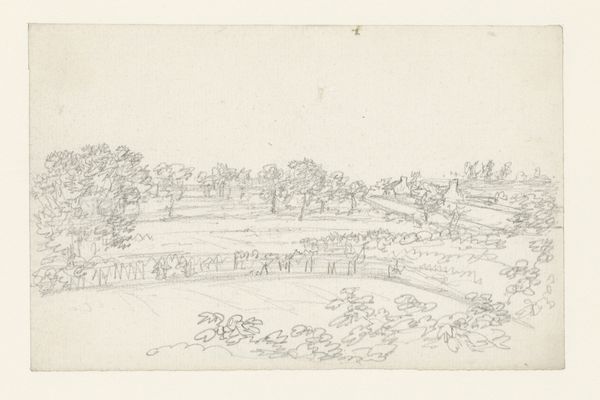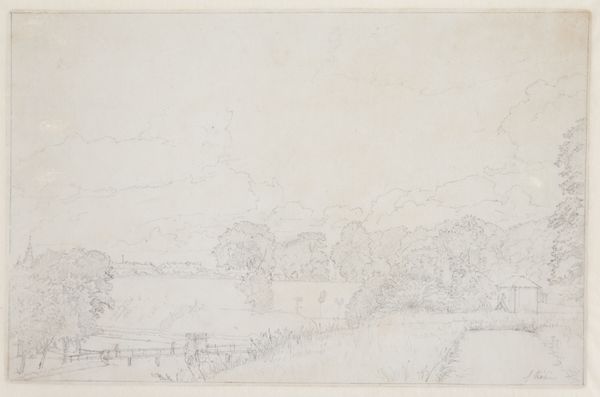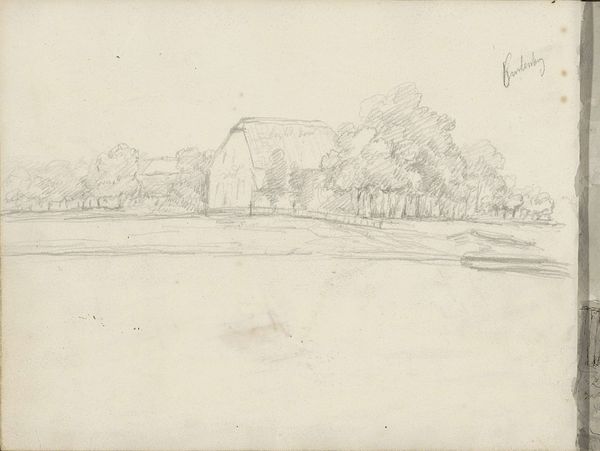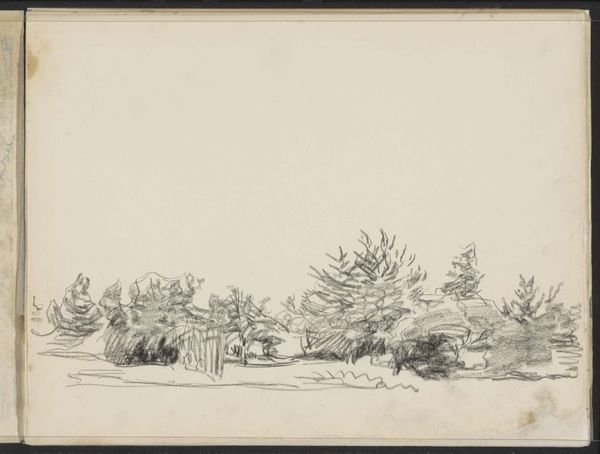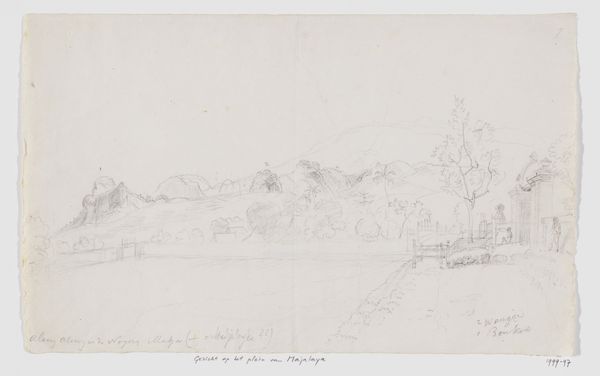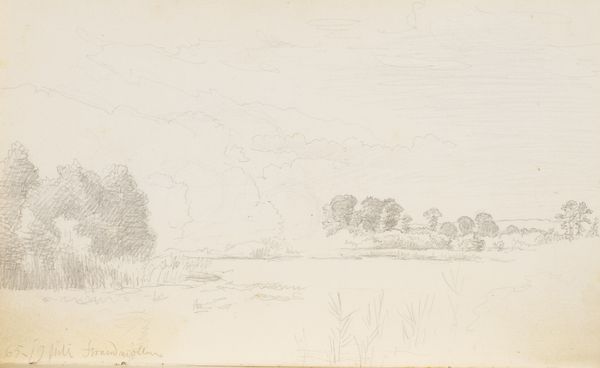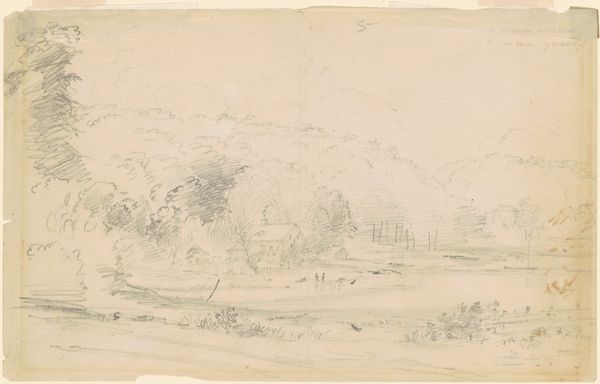
drawing, print, etching, ink, pencil
#
drawing
# print
#
etching
#
landscape
#
etching
#
ink
#
pencil
Copyright: National Gallery of Art: CC0 1.0
Editor: We’re looking at “Forsmarck,” a drawing and etching in ink and pencil. It seems to be a landscape, rendered with delicate lines. The overall mood is quite serene, almost classical, despite the mundane scene. What do you see in this piece, from a formalist perspective? Curator: The beauty of this work lies precisely in its structured simplicity. The composition guides the eye across the plane, from the detailed foreground elements to the more ethereal background, punctuated by the solid geometry of the buildings. Consider the use of line; it varies in weight to create depth and atmospheric perspective, moving from sharp definition to a softer, almost blurred quality as we move towards the horizon. Editor: So the line work is key to understanding the piece? Curator: Absolutely. Notice how the varying densities of the lines contribute to the overall tonality, almost mimicking light and shadow despite the absence of strong chiaroscuro. How do you interpret the use of the empty space? Editor: It does create a feeling of vastness. The eye fills in the blanks almost… Curator: Precisely! The artist uses negative space to great effect. This space invites contemplation. The lines themselves seem to perform and enact a semiotic structure and play between visibility and invisibility. The essence here is not just what is represented but *how* it's represented. Editor: That's fascinating. I hadn't thought about the negative space contributing so much to the reading of the image. Thanks for pointing out these key formal elements. Curator: It’s these internal elements that lend it meaning. Considering that the drawing could have been by Elia Martin or a close student, examining the intentional line quality becomes a central exercise for a deep analysis of its value.
Comments
No comments
Be the first to comment and join the conversation on the ultimate creative platform.
